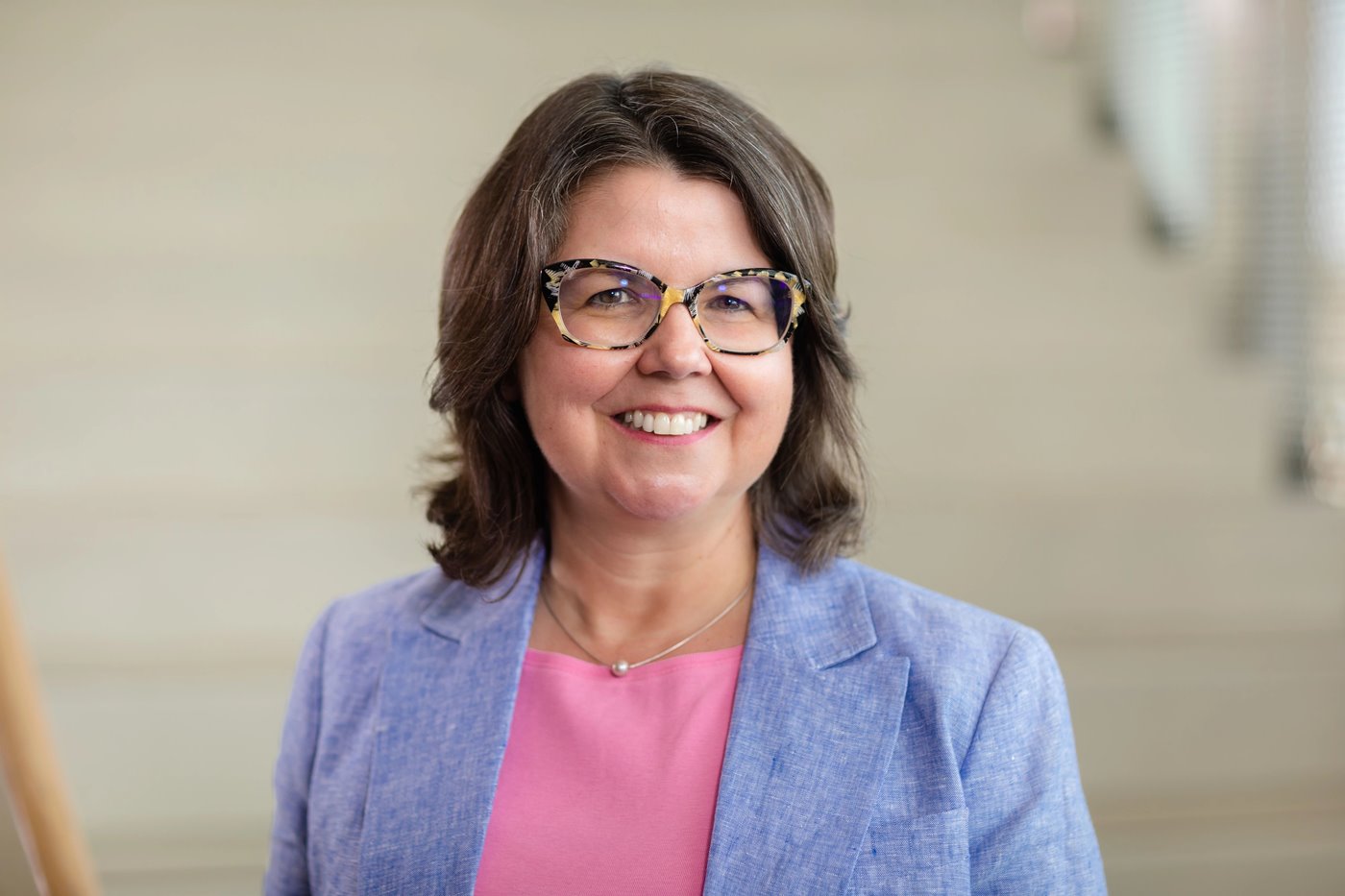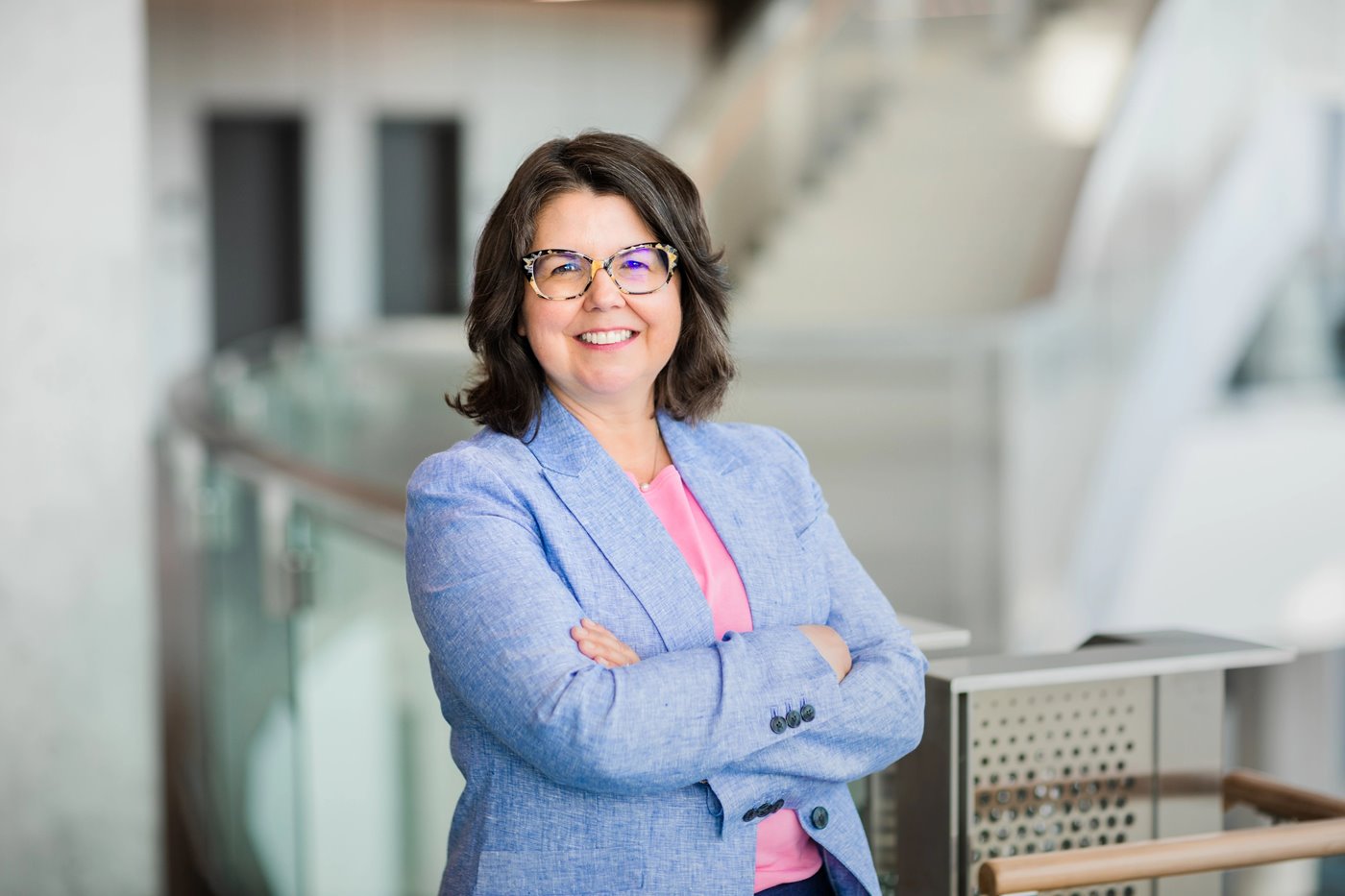Published on June 12, 2023
2023 NAIT Honorary Bachelor of Technology recipient fostered unprecedented collaboration through “Help! Save Stan”
Anyone who’s ever been a patient knows health care involves many practitioners with specific roles. Ideally, they’re working as a team with your well-being as their goal, leveraging one another’s skills, relying on each other, and sharing information freely. That is, they’re collaborating – a skill unto itself.
It would make sense, then, that this skill be taught in post-secondary, before aspiring doctors, nurses, paramedics, X-ray techs, lab techs, respiratory therapists and more end up at your bedside. Today, allowing all of those students to practise working together is part of a unique teaching event involving NAIT, the University of Alberta, Macewan University and Norquest College.
But this wasn’t always the case.
What’s known as interprofessional health-care education came to the fore in Edmonton because of a “what if” during a meeting involving health science deans from the four schools and led by a vice-provost at the U of A, where Dr. Sharla King teaches in the Faculty of Education.
When a government grant came up for proposals for innovation in education, that vice-provost asked King to lead a process to extend the relationship between the deans to the students themselves.
They asked for nearly $1 million – and got every penny. It was the first step in establishing a legacy and a unique training event called “Help! Save Stan” that continues to benefit students of the polytechnic and the other institutes today, as well as the patients they serve.
“We never had a thought that we would be successful,” says King, a NAIT 2023 honorary degree recipient. “Then we were. And that changed everything.”
Preparing for a complex, dynamic environment

When drafting their initial grant proposal, King and her colleagues knew that at least two things were essential.
One, of course, was that students actually meet with those from other disciplines, rather than proceed through their education within the bubble of a cohort from their own program.
“All of us send students to work in health care,” says King. “That’s a really complex, dynamic environment. We were doing a disservice to our learners by not having them work [prior to practice] with people that they’re going to work with in practice.”
Another item on their list was to make that student meeting meaningful. King and her team saw simulation training as the best way to achieve this, involving teams of students from different programs and institutes to participate in replications of real-world experiences.
“That was the birth of Save Stan,” she says.
In 2011, the first “Help! Save Stan” was held on a Saturday (to make it easier for students to attend) at MacEwan, where 135 students from 17 fields took part. As they would every year, facilitators helped stage and run simulations of situations students might encounter on the job, each one made to seem real by actors, manikins that would react like patients, and more.
But as King tells it, the real benefit of the event was its focus on interprofessional interactions and the impromptu formation of teams focused on patient care. Learning to collaborate was a key part of the annual exercise.
“You need to know how to develop relationships,” she says. “You need to know how to understand other perspectives. You need to know how to negotiate priorities and resources. And then, of course, manage conflict.”
Save Stan would run in similar form for nine years, until the pandemic, and NAIT would often account for the largest contingent of students after the U of A. In all, as many as 800 future health-care professionals would attend each year – a cumulative impact that can now be measured in thousands of grads now working in hospitals, clinics and ambulances.
“It was a success from the start,” says King.
A lasting legacy for patient care

Just as King points out that collaboration skills were an outcome of Save Stan, she sees its founding and legacy as the product of teamwork, too, regardless of her leadership. (She notes, for example, that “NAIT was a wonderful partner. They never waivered – they were always at the table, actively engaged.”)
But Dr. Efrem Violato, a researcher at NAIT’s Centre for Advanced Medical Simulation (CAMS), sees credit being due. King supervised his doctoral work, which focused on speaking up and challenging authority in health care, such as identifying a mistake or pointing out mistreatment. Violato has also helped stage Save Stan.
King is an influencer in the most impactful sense, he says. “She’s been central to Save Stan and interprofessional education, but more broadly to health education in Edmonton and beyond.”
King continues to publish on the subjects of collaboration and interprofessional education, Violato adds. She also recently chaired the program advisory committee for CAMS, helping to ensure that it achieved accreditation through the Society for Simulation in Healthcare, making it one of the few such centres in Canada to do so.
What’s more, Violato adds, “she’s very positive and very willing to do stuff. Coming from prior academic experience, not everybody you work with is willing [to do extra work]. She wants to.”
After being held virtually this year, Save Stan is likely on track to return to in-person simulations, says the CAMS researcher. Those who have benefited from it in the past, like Violato himself, are keen to return to give back to it. They continue to see the value in what King and her team set in motion.
King believes that clinicians enter their fields better because of interprofessional education. She sees a direct connection between what she calls “student-centred learning” and “patient-centred care.” What happens in the classroom setting can play out in the clinical one.
But for her, the real proof of the impact of the work she led is evidence of the community that has grown around Save Stan, a culture of collaboration that, a little over a decade ago, might have seemed as likely as landing a million-dollar grant.
“When you have students who go to Save Stan,” she says, “graduate and go into practice and then come back and say, ‘I want to come back and facilitate these simulations,’ that says a lot.”
Sharla King
2023 NAIT Honorary Degree recipient Dr. Sharla King helped NAIT improve Alberta health care.
Share on Facebook